Marine Boards vs. Marine Plywood: Why HDPE Wins Every Time
Whether you're building a boat, installing outdoor cabinetry, or creating custom dock components, selecting the right building material is key to performance, longevity, and cost-efficiency. Traditionally, marine plywood has been the go-to solution—but modern materials like High-Density Polyethylene (HDPE) marine boards are changing the game.
In this post, we compare marine boards vs. marine plywood, focusing on why HDPE wins every time—especially in demanding, moisture-rich environments.
1. What Are Marine Boards and Marine Plywood?
Marine Plywood is a traditional material made by bonding layers of hardwood veneers with waterproof adhesive. It's treated for moisture resistance but still relies on wood’s inherent vulnerabilities.
HDPE Marine Boards, on the other hand, are made from high-density polyethylene—a synthetic plastic engineered to be completely waterproof, chemical-resistant, and maintenance-free. They’re commonly used in marine, outdoor, and industrial applications due to their unmatched durability.
2. Durability and Lifespan: HDPE Outlasts Plywood
Marine plywood is water-resistant, not waterproof. Over time, especially in high-humidity or submerged environments, plywood can:
-
Delaminate
-
Rot or mold
-
Warp or swell
By contrast, HDPE marine boards are 100% waterproof and impervious to the elements.
HDPE Advantages:
-
Will not rot, split, crack, or absorb moisture
-
Can withstand UV exposure, saltwater, and chemicals
-
Maintains structural integrity for 10+ years, even in harsh environments
When it comes to durability, HDPE is virtually maintenance-free, whereas marine plywood often needs sealing, painting, and regular inspection.
3. Maintenance Requirements: Low vs. High
HDPE marine boards are a dream for professionals and DIYers alike because they require minimal upkeep.
| Feature | HDPE Marine Board | Marine Plywood |
|---|---|---|
| Waterproof | ✅ 100% Waterproof | ⚠️ Water-resistant, not waterproof |
| Maintenance | ✅ Wipe and go | ❌ Requires sealing/painting |
| Resistance | ✅ Chemical/UV resistant | ⚠️ Prone to UV/weather damage |
| Cleaning | ✅ Easy to clean | ⚠️ Can stain or degrade over time |
No sanding, no sealing, no rot treatment—just install and enjoy.
4. Ease of Use: Working with HDPE
HDPE marine boards are as easy to work with as wood—and in many cases, easier.
You can:
-
Cut with standard woodworking tools
-
Drill, route, and shape easily
-
Screw or fasten with traditional hardware
Plus, the textured surface of Blue Gator’s marine boards provides anti-slip functionality, perfect for wet or high-traffic environments.
5. Versatility and Application Range
HDPE marine boards are incredibly versatile and can be used in a variety of applications:
-
Boat building and decking
-
Dock components and ladder bases
-
Outdoor cabinetry and benches
-
Storage compartments and cutting boards
-
ATV, UTV, and RV utility panels
While marine plywood is still used in some traditional wooden boat designs, HDPE’s non-porous, weatherproof nature makes it the superior solution for modern marine and outdoor builds.
6. Environmental Impact: HDPE Is More Sustainable
Though synthetic, HDPE is 100% recyclable, making it a smart choice for eco-conscious builders. It:
-
Reduces long-term waste (won’t need frequent replacement)
-
Requires no chemical treatments
-
Lasts significantly longer than wood
By using HDPE over plywood, you’re choosing a low-maintenance, high-performance, and environmentally responsible material.
FAQs
Can I paint or stain HDPE marine boards?
No. HDPE is non-porous and does not absorb paint or stain—but it comes in colors like white, black, or tan for design flexibility.
Is HDPE more expensive than marine plywood?
Upfront, yes. But over time, HDPE's longevity and low maintenance make it a far more cost-effective investment.
Will HDPE crack or splinter?
No. HDPE is engineered to flex slightly without cracking, and it won’t splinter like wood.
Is it safe for food contact?
Yes. HDPE is FDA-approved for food-grade use, making it ideal for cutting surfaces and prep tables.
Can HDPE be used below the waterline?
Yes. Unlike plywood, HDPE is completely waterproof and can be submerged without degrading.
Conclusion: The Smart Alternative to Marine Plywood
If you’re building anything that faces moisture, weather, or outdoor exposure, HDPE marine boards are the clear winner. With better durability, virtually no maintenance, and environmental resilience, it’s easy to see why HDPE is the modern upgrade from marine plywood.
Make your next project smarter, longer-lasting, and more efficient—with Blue Gator’s high-performance HDPE marine boards.
Contact Us
Need help choosing the right HDPE sheet or marine board?
📞 Call 628-800-6287
📩 Contact Blue Gator Pro for expert guidance and bulk pricing.
